 Sideway
BICK BLOG from Sideway
Sideway
BICK BLOG from Sideway
|
Link:http://output.to/sideway/default.asp?qno=101000019 Reactive silencer Reactive SilencersSilencers is an acoustic filter to reduce acoustic energy. There are two type of silencers. One is dissipative by the dissipation of acoustic energy in the materials or the internal structures of the material. Another is reactive by making use of the wave reflection due to the impedance mismatch in an expansion chamber. 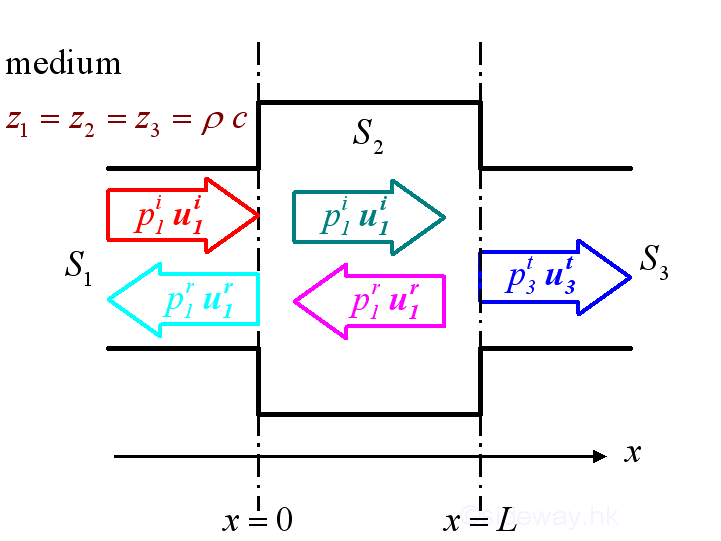
Assumptions Assumptions are made to simplify the model. The flow velocity of the gas is extremely slow that it can be neglected. No acoustic energy is transmitted through the walls of silencer. The acoustic waves are assumed to be plane wave and continuity conditions hold between mediums. There is no relfection wave at the outlet section.: Waves in Silencer At the intake tube:
At the chamber:
At the outlet, convert to x to 0 at L: 
Law of Continuity pressure continuity at x=0: 
mass flow continuity at x=0: 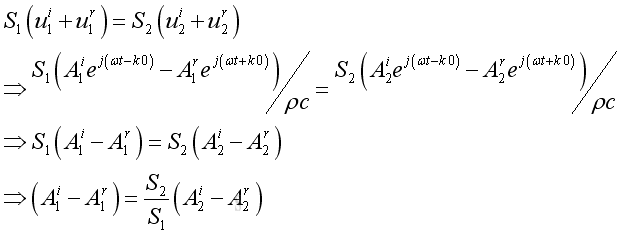
pressure continuity at x=L: 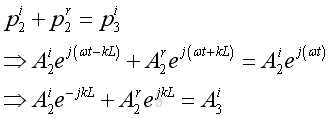
mass flow continuity at x=L: 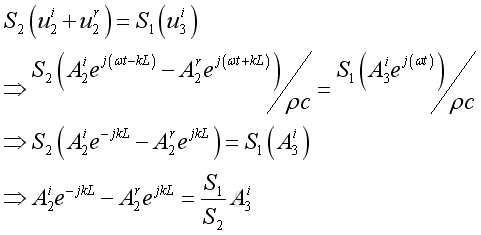
From the continuity conditions at x=0, imply 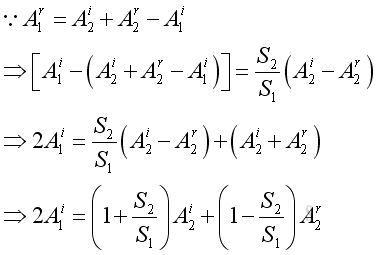
From the continuity conditions at x=L, imply 
Equating two continuity conditions and get 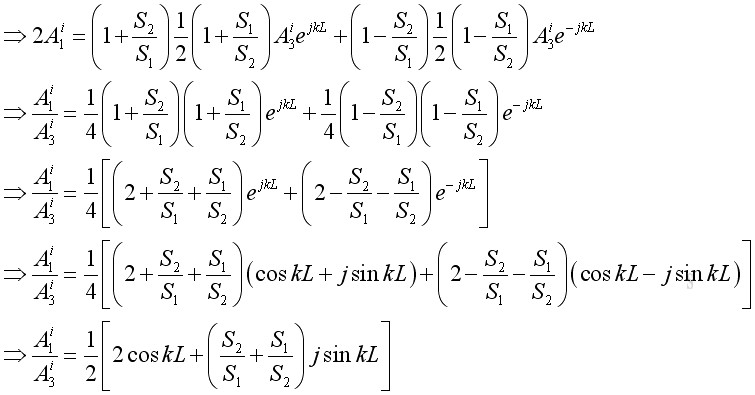
Equating two continuity conditions and get 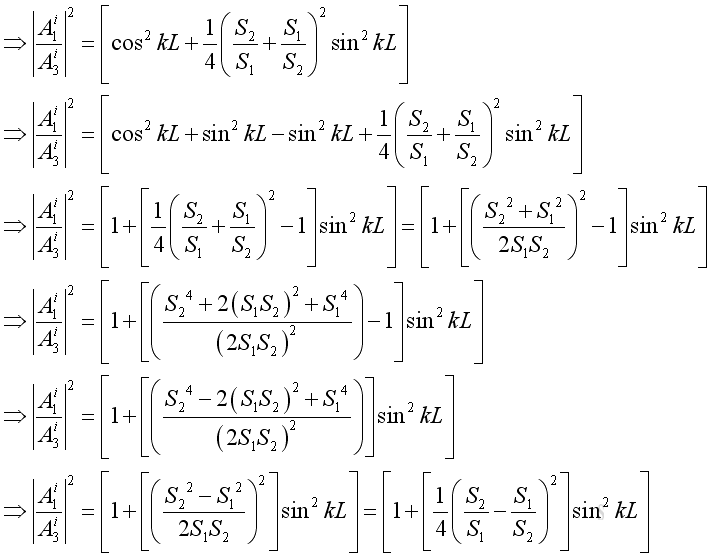
Transmission Loss The transmission loss is: 
From the transmission loss, the performance of a reactive silencer depends on the dimension of the the silencer and the operating frequency. When sinkL=0, there is no attenuation because of the resonance of the chamber. And because it is a square sin function, the attenuation varies with the operating frequencies. A larger cross sectional area ratio can increase the attenuation level without changing the resonance frequencies. Change of the length of the chamber only increase the number of resonance frequency. does not change the attenuation level.. |
Sideway BICK Blog 19/10 |
|||||||||||||||||||||||||||||||||||||||||||||||||||||||||||||||||||||||||||||||||||||||||||||||||||||||||||||||||||||||||||||||||||||
 and
and

 and
and


